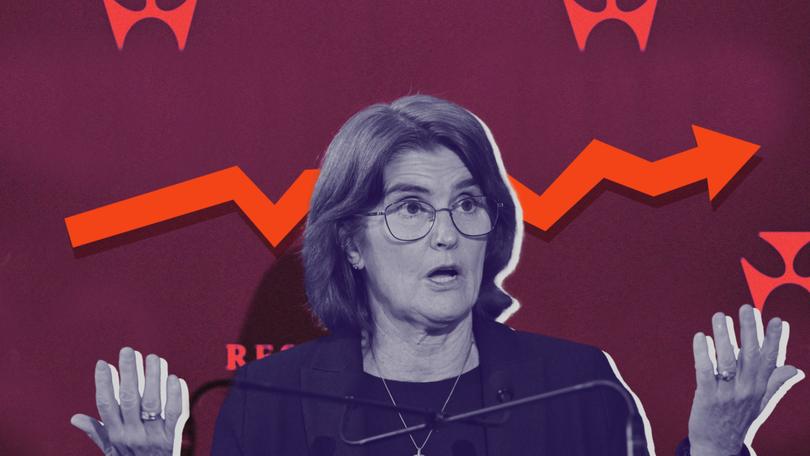Unemployment steady at 4.2 per cent as August delivers good jobs growth

Economists and markets are once again dialling down talk of an interest rate cut after 48,000 Australians found jobs in August.
The strength in Thursday’s Australian Bureau of Statistics data will add evidence to the Reserve Bank’s view that the labour market is still too hot to offer borrowers any relief.
The jobless rate was roughly steady at 4.2 per cent — seasonally adjusted — with Western Australia tied for the best performer at 3.9 per cent
Sign up to The Nightly's newsletters.
Get the first look at the digital newspaper, curated daily stories and breaking headlines delivered to your inbox.
By continuing you agree to our Terms and Privacy Policy.Commonwealth Bank has been among the most optimistic about a reduction in interest rates but punted their target date for a cut back six weeks to December.
The big four bank attributed the setback to rapid jobs growth and Governor Michele Bullock’s tough talk on fighting inflation.
Trader bets on a December cut inched lower, Bloomberg tracking showed. The likelihood of a downward move at that meeting has dropped 17 percentage points to be about two in three.
NAB stuck to May 2025 for a rate reduction while ANZ held firm on February.
But there was positive news for borrowers from the boffins at UBS.
The investment bank moved their forecast for a rate cut forward three months to February, chalking up the change to a weaker outlook in China and lower likelihood of a big spending Federal Government before the next election.
UBS also pointed to the over-sized 50 basis point rate slash by the United States Federal Reserve overnight.
The Fed loosened their funds rate to a band of 4.75 to 5 per cent — still higher than Australia’s benchmark — touting good progress on slowing inflation.
Focus for the RBA will be closer to home with local inflation at 3.8 per cent, above the target band of 2 to 3 per cent.
The central bank has recently signalled the jobs market may be stronger than the long-term sustainable level, making the battle against rising prices much harder. Yet it also means the hopes of a “soft landing” remain in sight.
HSBC chief economist Paul Bloxham captured this sentiment saying “Australia’s economy is in a different spot compared to many other economies, including the US”.
“Still strong job creation, and an economy that is operating at near its full capacity are contributing to Australia’s sticky inflation challenge, and mean rate cuts are unlikely to be on the agenda for some time yet,” Mr Bloxham said.
“Our central case is that rate cuts are not likely until (June quarter) 2025 . . . get ready for quite a bit of divergence between the RBA’s cash rate path and those of many other central banks, including the Fed.”
It wasn’t just job creation hitting a high note.
Hours worked lifted.
The share of Australians participating in the labour market by either looking for work or working remained at a record high 67.1 per cent.
Female participation in the labour force has been surging and nearly 7 million women are employed.
There has also been bumper population growth, running at more than 615,000 in the year to March.
All those supply boosts appear to have been soaked up by new jobs, despite the slow growth of economic activity.
HSBC and Commonwealth Bank both reckoned employment was running especially hot in the public sector, lining up with data showing public demand added to GDP.
The run of good figures has shocked some observers who had expected the aggressive campaign of rate hikes starting in 2022 to “gut-punch” the economy.
Treasurer Jim Chalmers spruiked the jobs figures as “a solid achievement”.
“We are all about more people working, earning more and keeping more of what they earn and this shows we are making good progress.,” he said.
But outside the labour market the news this week has been less good, with a warning from CreditorWatch that business failures were rising and Moody’s tipping a modest lift in subprime borrowers falling behind.
The Reserve Bank will make its next call on rates next Tuesday.
